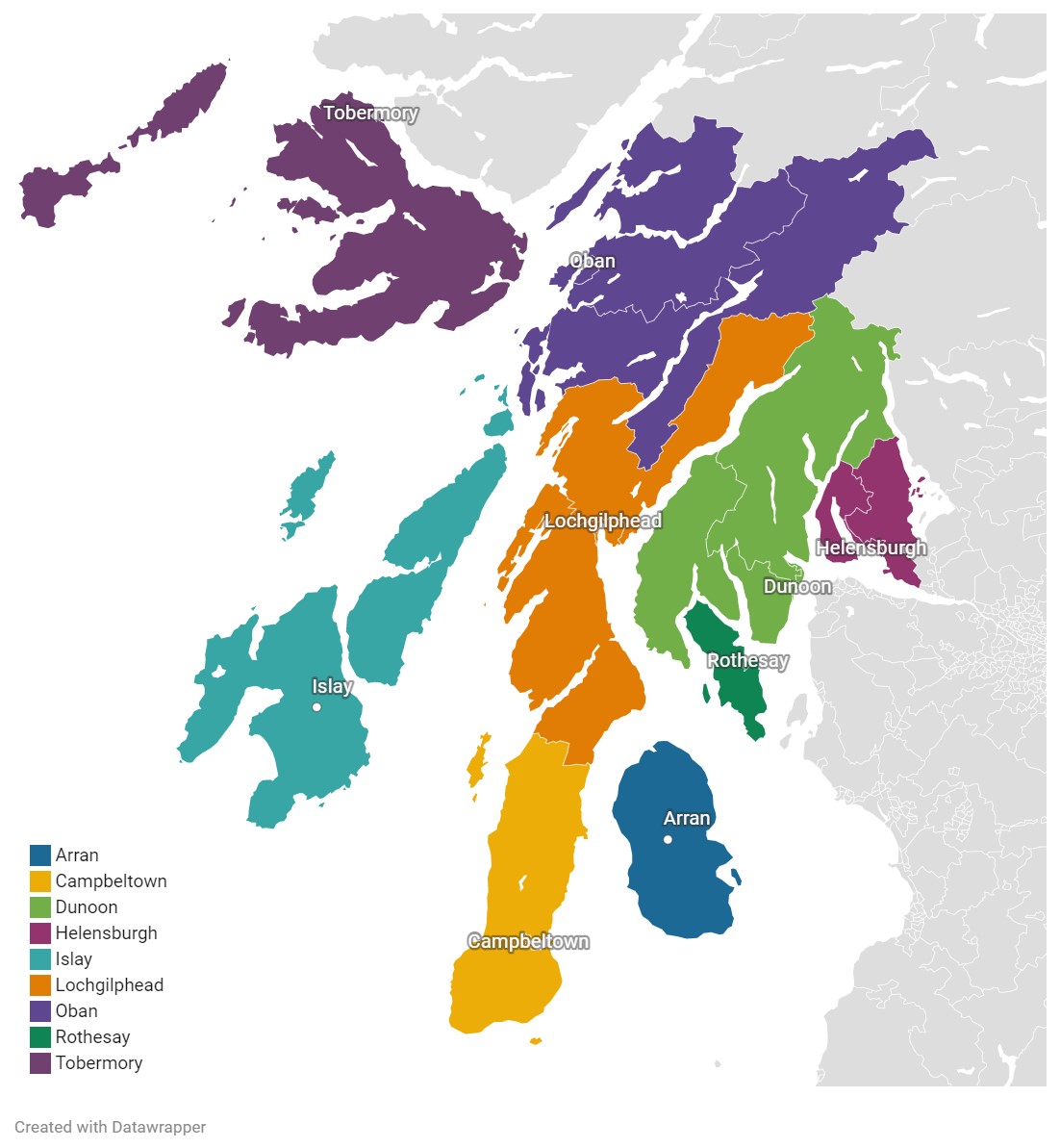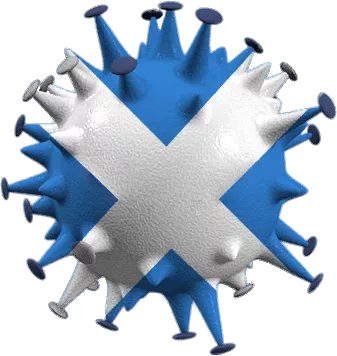Last Updated: 13th October 2022
This page has been created to help staff/students at Argyll College UHI get a better understanding of the Covid-19 situation in their local area. It will also be helpful for anyone else who lives in Argyll & Bute, or Arran! A wide range of charts, tables, and maps are included on the page; however, you can also get a quick ‘at a glance’ summary of all the information via the drop-down section below. A second drop-down section is also available, giving further information about the data found on this page.
This page has been created to help staff/students at Argyll College UHI get a better understanding of the Covid-19 situation in their local area. It will also be helpful for anyone else living in Argyll & Bute, or Arran!
A wide range of charts, tables, and maps are included on the page; however, you can also get a quick ‘at a glance’ summary of all the information via the drop-down section below. A second drop-down section is also available, giving further information about the data found on this page.
Cases in Argyll & Bute / Arran have increased this week, after a decrease last week. All of the zones combined had a total of 33 new cases this week, which is up from 28 last week.
At a regional level, Dunoon, Lochgilphead, Tobermory, and Islay have reported fewer than 3 new cases this week (which will be displayed at 0). The has been a small decrease in Helensburgh and Arran, but increases elsewhere.
At an intermediate zone level, 15 different zones (from 24) reported fewer than 3 new cases this week (down from 18 last week). The zone with the highest rate this week is Loch Awe, which currently has the 9th highest case rate in Scotland (out of 1,279 zones).
In comparison to the rest of Scotland, case rates in Argyll & Bute are currently below average.
This page shows the Covid-19 case data for all of the intermediate zones in Argyll & Bute, and also for Arran. It will be updated each Thursday, by 5pm.
When the page is updated, it will show the most recent weeks data, which will be for the week up to the most recent Friday. So, for example, if this page is updated on Thursday the 16th of June, then it will show how many new people tested positive in the week up Friday to the 10th of June.
The data is based on specimen date, so it isn’t just how many new cases were reported during that week, but it is how many people took a test during that week, which turned out to be positive.
Please be aware that if a zone has had only 1 or 2 new cases in a week, then this data is suppressed due to confidentiality issues, and the zone will just display as 0.
Several of the charts on this page group the intermediate zones into ‘Regions’. These are based on the nine Argyll College regions, and are as below:
Arran: Arran
Campbeltown: Campbeltown / Kintyre Trail
Dunoon: Cowal North / Cowal South / Dunoon / Hunters Quay
Helensburgh: Garelochhead / Helensburgh Centre / Helensburgh East / Helensburgh North / Helensburgh West and Rhu / Lomond Shore
Islay: Whisky Isles
Lochgilphead: Greater Lochgilphead / Knapdale / Mid Argyll
Oban: Benderloch Trail / Loch Awe / Oban North / Oban South
Rothesay: Bute / Rothesay Town
Tobermory: Mull, Iona, Coll, and Tiree
Please see the bottom of this page for some additional information, and a message box where you can get in touch with any questions or suggestions!
This page shows the Covid-19 case data for all of the intermediate zones in Argyll & Bute, and also for Arran. It will be updated each Thursday, by 5pm.
When the page is updated, it will show the most recent weeks data, which will be for the week up to the most recent Friday. So, for example, if this page is updated on Thursday the 16th of June, then it will show how many new people tested positive in the week up Friday to the 10th of June.
The data is based on specimen date, so it isn’t just how many new cases were reported during that week, but it is how many people took a test during that week, which turned out to be positive.
Please be aware that if a zone has had only 1 or 2 new cases in a week, then this data is suppressed due to confidentiality issues, and the zone will just display as 0.
Several of the charts on this page group the intermediate zones into ‘Regions’. These are based on the nine Argyll College regions, and are as below:
Arran: Arran
Campbeltown: Campbeltown / Kintyre Trail
Dunoon: Cowal North / Cowal South / Dunoon / Hunters Quay
Helensburgh: Garelochhead / Helensburgh Centre / Helensburgh East / Helensburgh North / Helensburgh West and Rhu / Lomond Shore
Islay: Whisky Isles
Lochgilphead: Greater Lochgilphead / Knapdale / Mid Argyll
Oban: Benderloch Trail / Loch Awe / Oban North / Oban South
Rothesay: Bute / Rothesay Town
Tobermory: Mull, Iona, Coll, and Tiree

Please see the bottom of this page for some additional information, and a message box where you can get in touch with any questions or suggestions!
This chart shows the number of new cases this week, last week, and in total for each intermediate zone. The intermediate zones are grouped into their regions, and then a total is displayed for each region too! This is simply just the sum of the intermediate zones within.
You can use the drop-down menu to switch between the various metrics, and also select the header of a region to see the figures for each intermediate zone within in more detail.
This map shows the number of new cases in each intermediate zone this week. You can zoom in to see the zones in more detail, and also select or hover over a zone to see a pop up containing more information.
These two charts show the number of new cases per week in each region and intermediate zone since the beginning of the pandemic.
You can use the buttons at the top of the chart to see the weeks in 2020, 2021, 2022, or all, and you can also use the drop-down menu to select a specific area.
These two tables give a good summary of the overall and recent Covid-19 situation in each region and intermediate zone in Argyll & Bute / Arran.
The ‘Total Cases’ figure is the sum of each areas weekly increases since the beginning of the pandemic. The true number of total cases for each area will likely be a bit higher than this, as the figure here will not count any weeks where the number of cases was only 1 or 2.
The ‘Change from Last Week’ figure shows by what percentage this weeks number of new cases has increased/decreased from last week.
The ‘Per 1000 Pop’ columns show the same figures, after adjusting for the different population sizes in each area. E.g, (cases / population) * 1000. I use per 100,000 population figures on other pages, however I thought doing it per 1000 population would make more sense here with the smaller population sizes. Another way of thinking about it is to divide the per 1000 population figures here by 10, and then you get a per 100 population figure, which also works as a percentage figure. E.g, 50 total cases per 1000 pop = 5 total cases per 100 pop = 5% of that areas total population have been infected (at least).
You can use the search bar to display one or more specific areas, or to filter by region on the intermediate zone table. You can also select a column header to sort the table by that.
Each square on this heatmap represents a single week, and the colour of the square is determined by the number of new cases found in each intermediate zone for that week. For example, if a zone has 12 new cases in a week, then the square for that week will fall into the 11 – 15 range, and will therefore be orange.
You can use the buttons at the top of the chart to see the weeks in 2020, 2021, 2022, or all.
This chart shows the total number of new cases found in each region (the sum of all the intermediate zones within), over the past 4 weeks, per 1000 population.
You can use the buttons at the top of the chart to see the weeks in 2020, 2021, 2022, or all, and you can also use the search bar to view one or more regions in more detail.
This table shows where each of the intermediate zones in Argyll & Bute / Arran sits on a national scale.
It is based on the number of cases over the past week, per 1000 population. The area in Scotland which has had the most new cases, per 1000 pop, will be 1st (of 1,279).
All of the zones which have not had any cases reported in the past week will be displayed at the bottom with the same rank.
This chart shows the number of new cases found in each region and intermediate zone over the past week (per 1000 population), and how much this has changed from the week before. The line in the middle represents a 0% change. Any areas to the left of that line have falling case rates, and any areas to the right of it have rising case rates. The higher up an area is, the more cases (per 1000 population) it is having.
On the intermediate zone chart, you can deselect regions by selecting their names in the legend. Doing this may make the chart more readable for the specific zones you want to see.
Percentage Change from Last Week
This chart shows the number of new cases found in each region and intermediate zone over the past week (per 1000 population), and how much this has changed from the week before. The line in the middle represents a 0% change. Any areas to the left of that line have falling case rates, and any areas to the right of it have rising case rates. The higher up an area is, the more cases (per 1000 population) it is having.
On the intermediate zone chart, you can deselect regions by selecting their names in the legend. Doing this may make the chart more readable for the specific zones you want to see.
Support the Page!
If you are finding this page useful and want to help support it, maybe consider giving a donation below.
Any help is really appreciated!! :)
Let me know if you spot an error / Have a suggestion!
About Coronavirus (COVID-19)
NHS Scotland has some great information here about the virus, and how you can look after your own physical and mental health during these difficult times.
Share this Page
F.A.Q
Me! I’m John, a 27-year-old (ex) student at Argyll College UHI (based in Dunoon). I’ve been tracking the Scottish Covid-19 figures since the beginning of the pandemic (here), and decided that I wanted to start tracking some of the figures more locally to Argyll & Bute.
I thought it would be a nice way to help out the local community, and also help the staff/students at Argyll College keep up to date with the situation in their local area.
And if you were wondering, In 2022 I completed a Business & Management with Marketing degree. It isn’t really related to this website, although I completed a HNC in Digital Design and Web Development a few years ago, which helped me build up the core skills needed to create a website like this!
At an intermediate zone level, not really. All we get told about are cases and deaths.
Only the case data is included on this page. To see the death data, you can visit this page where it will hopefully be added soon. Please note that the death data is only updated once a month.
At a council area level, additional figures are available (including vaccinations). To see some of that, you can visit this page here. And to see figures for Scotland as a whole, you can visit this page here.
Sorry!
One issue might be that you’re using Firefox. This browser seems to break the page for a lot of people, and I have no idea what is causing it. My only suggestion would be to try viewing the page on another browser, as it just seems to be Firefox which has issues, on a range of devices.
If things in general aren’t updating, then it might just be that the page your browser is showing you hasn’t updated to show the most recent version. This seems to be an issue for only some people, for whatever reason. But if you view the page in private/incognito mode, then the issue should go away.
It’s a WordPress site, built with Elementor. That covers most of the page, but all the graphs/charts/tables are embedded from a range of different places!
On this specific page they are from Datawrapper and Flourish (you’ll see in the footer of each chart where they are from).
I’d be happy to answer any other questions about it, but it is quite simple. Rather than advanced automatic, the process is more focused on careful data curation and manual updates to ensure accuracy.
Doing something like this for the entirety of UHI would be quite a big undertaking, as the campuses are so spread out across Scotland. It would take a while to get it all set up and working properly, and unfortunately I don’t have the time available to do that right now.
And of course, doing something like this for the entirety Scotland would be an even larger undertaking, as there are almost 1,300 intermediate zones, and showing such detail for all of them would be very difficult to do. So I can’t do that right now either.
There is still a lot of council area data available here though, and on that page you can scroll down to see a ‘Cases by Intermediate Zone’ Table/Map to get more local figures for where you are. Those are updated on a daily basis.
That being said, if you are in the Western Isles, then NHS Western Isles have a great page here that tracks every single new case and shows whereabouts it is from. I don’t think any other NHS boards do this, but it is still worth following your local one to get area-specific updates for where you are.
These are just geographical zones. Like council areas, but a lot smaller!
Most have around 2,000 – 6,000 people in them. This is quite small, so any medium or larger sized towns will be split up into multiple intermediate zones.
Sometimes it can be confusing trying to find out exactly what zone you are in. To help with this, you can visit this page and search for your postcode. Then select your postcode, and you’ll see the name of your intermediate zone in the list to the left (the 2011 one).
Disclaimer
The data on this page is obtained from official sources, and it is accurate to the best of my knowledge. However, I am only human! I sometimes make miscalculations, or typos. Don’t always take the information on this page as fact and base decisions on it.
All the sources are listed above, as is the spreadsheet I make all my calculations in, so feel free to double-check the data and let me know if you think something isn’t correct!
This website is not associated with the Scottish government, UK government, NHS, or any other organization. It is just run by an individual who does not value his free time.


 Buy Me A Coffee
Buy Me A Coffee